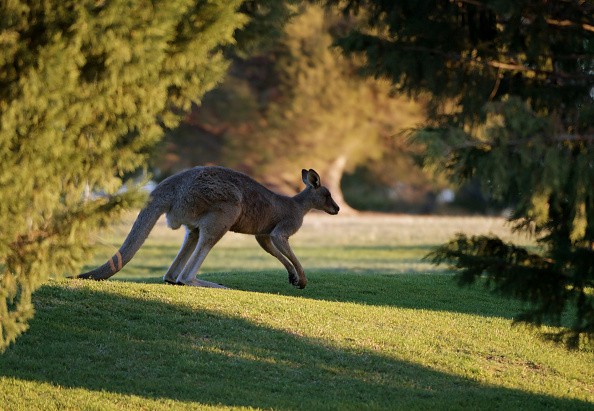Flexible shoulders gave clue that a hefty and now-extinct kangaroo could climb through the branches.
A big kangaroo climbing a tree might look roo-diculous today. But hundreds of thousands of years ago, some hefty kangaroos were actually adapted to tree-living, according to a recent study.

Congruous kitcheneri
Most marsupial families (modern macropods) which include kangaroos, wallabies, and pademelons stick to the ground, but a few of these species spend almost all of their time in trees. Natalie Warburton and Gavin Prideaux from Murdoch University in Perth and Flinders University in Adelaide respectively, both in Australia, examined fossils of the extinct macropod Congruous Kitchener, discovered in southern Australia.
Standing close to one meter tall and its weight about 50 kilograms, Congruous kitcheneri was shorter than most of its extinct huge relatives but bigger than most living species of marsupial. Congruous kitcheneri had a specifically flexible shoulder joint, big hands and feet with curved claws, and arm muscles exclusively for pulling the forelimbs into the body and not like its big-framed cousins.
These physical traits recommend that Congruous kitcheneri was able to ascend and move gradually through trees, though it was not as used to tree-living species as modern tree-kangaroos, according to the researchers.
The Marsupial Species
The kangaroo is a marsupial species which means "large foot". Mostly, the term is used to explain the largest species from this family of macropods which are the red kangaroo, antilopine kangaroo, western grey kangaroo, and as well as eastern grey kangaroo.
Kangaroos are aboriginal to New Guinea and Australia. In 2011, the government of Australia estimated that 34.3 million kangaroos inhabited the commercial harvest regions of Australia 2011, up from 25.1 million a year before.
The wallaby, wallaroo, and kangaroo relate to a paraphyletic animal group. All three relate to members of the same family of Macropodidae and are differentiated according to size. The largest animals in the family are known as kangaroos and the smallest are commonly called wallabies. The term wallaroos mean species of average size.
Tree-living Kangaroos
There are also the tree-living kangaroos, another type of macropod, which survives the tropical rainforests of New Guinea, faraway northeastern Queensland, and some of the islands in the area.
They have large, strong hind legs, large feet used for leaping, a small head, and a long muscular tail used for maintaining balance. Like most species of marsupials, female kangaroos have a pouch known as marsupium where they finish postnatal development.
The hefty kangaroos have adapted much to land clearing for pastoral agriculture and changes in habitat brought to the landscape in Australia by humans than the smaller macropods. Most of the smaller species are endangered and rare, while kangaroos are relatively abundant.

Marsupial Parenting
Female kangaroos have one baby at a time. The baby immediately climbs into the pouch of the mother and does not come out for two months.
Until it's about eight months of age, threatened young kangaroos, known as Joey will quickly dive for safety. As they develop, the heads and feet of Joey can frequently be seen popping out of the pouch.
Related Article : Video of Kangaroo on a Leash Sparks Debate: Should Wild Animals Be Treated Like Pets?
For more news, updates about kangaroos and similar topics don't forget to follow Nature World News!
© 2026 NatureWorldNews.com All rights reserved. Do not reproduce without permission.





